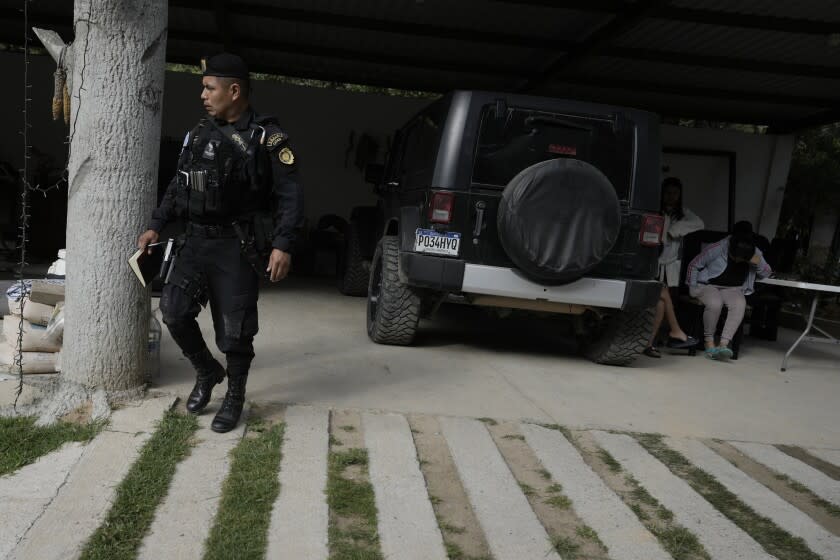Guatemala arrests suspected migrant smugglers wanted by the U.S.

At dawn, police and federal agents with cover from helicopters flying overhead raided a large ranch nestled among the mountains of northern Guatemala, not far from the border with Mexico.
Authorities said they found horse stables, a swimming pool, late-model vehicles, guns and a still-drunk Felipe Diego Alonso, the alleged leader of a smuggling ring that moved migrants from Guatemala north to the United States.
The raid in an otherwise impoverished neighborhood was one of several carried out Tuesday in four Guatemalan provinces against a migrant smuggling ring, for which authorities say they’ve documented $2 million in revenue since 2019.
Alonso and three others arrested Tuesday were targets of U.S. prosecutors, wanted in connection with the death of a Guatemalan migrant in Texas last year. In total, authorities arrested 19 alleged members of the smuggling ring.
The arrests came a month after 53 migrants, including 21 Guatemalans, died in a failed smuggling attempt when they were abandoned inside a sweltering tractor trailer in San Antonio. There was no indication that those arrested Tuesday were involved in the Texas tragedy.
The extradition of alleged migrant smugglers known as “coyotes” has been rare, and these would be the first known cases in Guatemala of smugglers allegedly pursued for the death of a migrant in the U.S.
Prosecutions of migrant smugglers in Guatemala have proved exceedingly difficult because migrants are almost never willing to identify or testify against their smugglers. In some cases they hope for another chance to migrate to the United States with the smuggler’s help, and in others they are afraid of retribution by the smugglers or their organized crime connections.
Alonso, appearing groggy in blue jeans and a white golf shirt, said he was an onion grower who also sometimes sold land and automobiles.
Some of the detainees were flown to Guatemala City for their initial court appearances.
The arrests come at a time of heightened tensions between Guatemala’s President Alejandro Giammattei and Washington.
The Biden administration has been outspoken in its criticism of perceived backsliding on corruption prosecutions. The U.S. government sanctioned Guatemala’s attorney general, Consuelo Porras, alleging she was an obstacle to anti-corruption work and was now pursuing judges and prosecutors who had worked on corruption cases.
It was the attorney general’s office backed by national police that carried out the raids near the northern town of Huehuetenango at dawn Tuesday.
“This was an organized group dedicated to getting migrants with the proposal of transporting them to Mexico and then to the United States,” said Stuardo Campo, Guatemala’s prosecutor for migrant trafficking.
He said that the U.S. Department of Homeland Security had supported the operation. Guatemalan authorities had documented 11 operations by the smuggling network to move migrants since October, but Campo did not say how many migrants were smuggled.
The four people arrested at the request of U.S. authorities are allegedly linked to the death of Marta Raymundo Corio, who was found dead near Odessa, Texas, after being smuggled through Mexico in early 2021.
Campo said the woman had died in a warehouse in Texas from lack of food and water and her relatives had requested the help of authorities in determining what had happened.
As Alonso was led away Tuesday, he told authorities to take care of his animals. Speaking Kanjobal, an Indigenous language, he said, “I’d rather they eat than I eat.”
This story originally appeared in Los Angeles Times.

 Yahoo News
Yahoo News 
